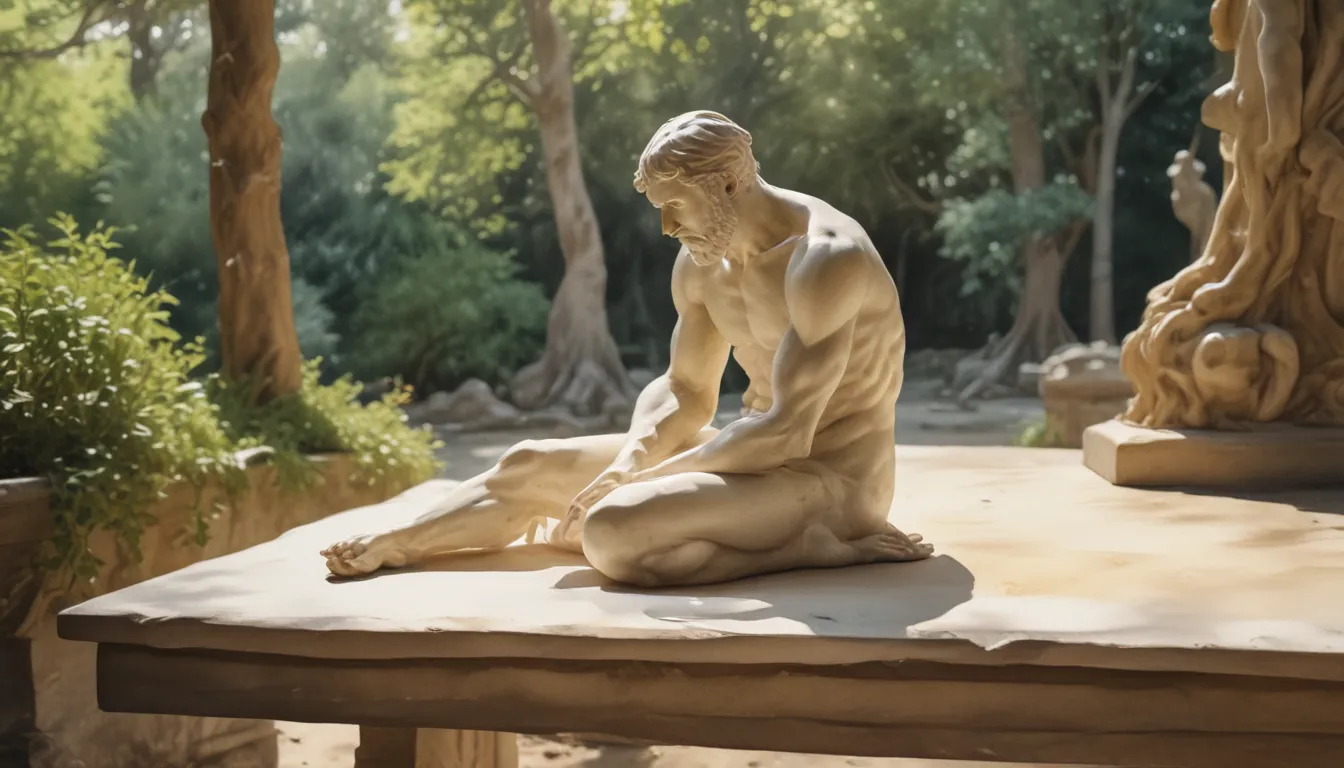The images in our articles are for illustrative purposes only and may not exactly match the content. They are intended to capture your interest and complement the text, not to replace it.
If you’re an art enthusiast or someone with a curious mind, you’ve likely encountered the striking figure of Rodin’s “The Thinker” at some point in your journey through the world of art. This iconic sculpture by French sculptor Auguste Rodin has been captivating audiences for over a century with its powerful depiction of contemplation and introspection. While many may be familiar with the general concept and appearance of “The Thinker,” there are several surprising and lesser-known facts about this renowned masterpiece that are sure to amaze and inspire you.
The Origins of The Thinker
Originally Named “The Poet”: Auguste Rodin initially conceived The Thinker as a representation of the Italian poet Dante Alighieri for a proposed museum of decorative arts. However, he later detached it from the project and gave it the name “The Thinker.”
Part of a Larger Work: Rodin intended The Thinker to be a part of his famous work, “The Gates of Hell.” However, its popularity led to it becoming an independent sculpture full of symbolism and inspiration.
Symbolism and Inspiration
Reflecting the Human Mind: The seated figure of The Thinker, with its head resting on its hand, symbolizes profound contemplation and intellectual reflection. It represents the eternal struggle of the human mind and the process of deep thought.
Inspired by Michelangelo: Rodin drew inspiration from the renowned artist Michelangelo, particularly in the representation of the human body. The muscular and powerful physique of The Thinker reflects this influence.
Creation and Technique
Unique Method of “Assemblage”: Rodin created The Thinker using a technique known as “assemblage,” molding and assembling separate parts to form the final sculpture. This allowed him to capture intricate details and convey a sense of realism.
Multiple Casts Exist: While The Thinker is an original creation by Rodin, several authorized bronze casts exist in various museums worldwide, ensuring that more people can experience the artwork.
Impact and Recognition
Iconic Symbol of Intellectualism: The powerful and thought-provoking image of The Thinker has made it one of the most recognizable sculptures globally, symbolizing intellectualism, philosophy, and introspection.
Artistic Inspirations: The Thinker has inspired numerous artistic adaptations, from paintings to pop culture references, showcasing its enduring impact on the world of art.
Conclusion
In conclusion, Rodin’s masterpiece, The Thinker, holds a wealth of surprising facts and stories that add depth and appreciation to its meaning and significance. Whether you’re an art enthusiast or simply curious about this famous sculpture, understanding the origins and symbolism behind The Thinker can enhance your experience with this timeless masterpiece. So, next time you encounter The Thinker, you can impress your friends with your knowledge and engage in contemplation alongside this iconic statue.
Have a question about The Thinker? Check out our FAQs below for more insights into this iconic sculpture:
FAQs
-
Who created The Thinker?
The Thinker was created by the renowned French sculptor Auguste Rodin in the late 19th century. -
What is the inspiration behind The Thinker?
The Thinker was originally conceived as part of a larger sculptural project called “The Gates of Hell,” with the main figure representing Dante Alighieri, the renowned Italian poet. -
Is The Thinker based on a real person?
While The Thinker is not based on a specific individual, it is believed to depict a universal representation of humanity lost in thought and contemplation. -
Where can I see The Thinker?
The Thinker can be found in various locations worldwide, including the Musée Rodin in Paris, France, and the Rodin Museum in Philadelphia, USA. -
How much does The Thinker weigh?
The original bronze version of The Thinker weighs approximately 1800 kilograms (4000 pounds). -
Why is The Thinker often associated with philosophy?
The Thinker’s contemplative pose and introspective expression have made it a popular symbol of philosophy, representing deep thought and the pursuit of knowledge and wisdom. -
Has The Thinker been replicated or reproduced?
Yes, The Thinker has been replicated and reproduced in various sizes and materials, allowing art enthusiasts to admire this iconic sculpture beyond its original form. -
How much is The Thinker worth?
The value of The Thinker varies depending on factors such as the edition, condition, and provenance. Original casts have been sold for millions of dollars in auctions. -
Are there any controversies surrounding The Thinker?
Over the years, there have been debates and controversies surrounding the authenticity and ownership of some casts of The Thinker, adding an intriguing layer to its fascinating history. -
Can I take pictures with The Thinker?
Photography policies may vary at different locations exhibiting The Thinker. It’s best to check the guidelines of the specific museum or institution where the sculpture is displayed.
Rodin’s The Thinker continues to mystify and inspire audiences worldwide with its profound symbolism and immaculate craftsmanship. As you explore the intriguing world of sculpture, let the enigmatic figure of The Thinker spark your curiosity and appreciation for the artistic wonders that grace our world.






